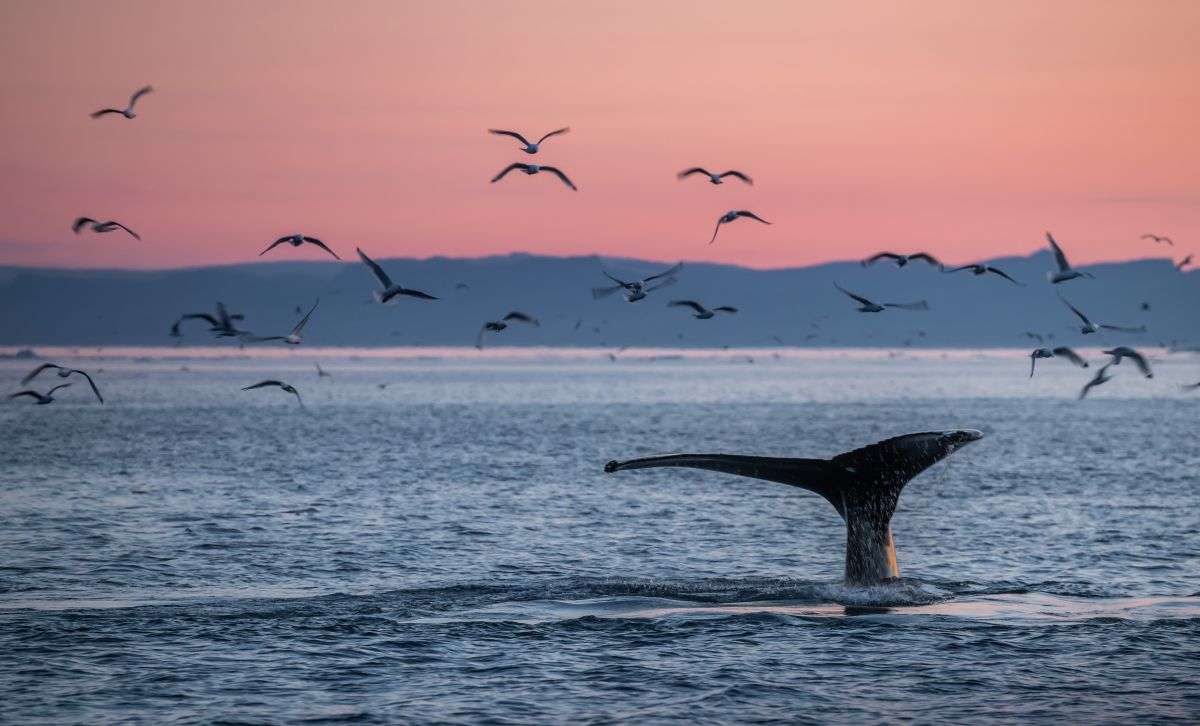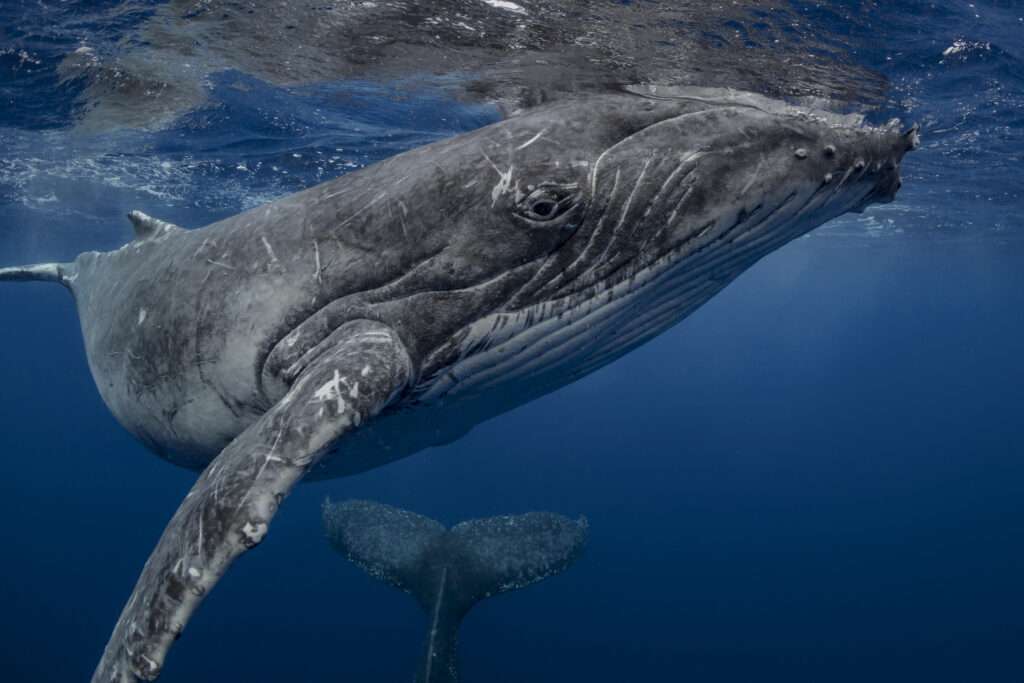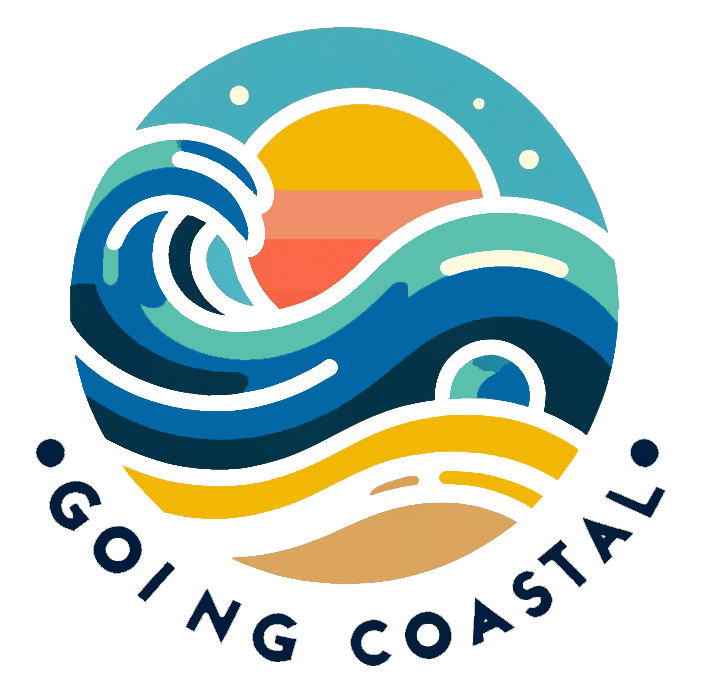Why Humpback Whales Migrate Through the Mona Passage

Each winter, thousands of humpback whales make a long journey from the frigid northern Atlantic to the warm, clear waters of the Caribbean. One of the most important gateways on their route is the Mona Passage, the strait that separates Puerto Rico from the Dominican Republic. This natural corridor is vital not only to the whales’ survival, but also to the communities that welcome them each year.
A Natural Whale Highway
The Mona Passage links the Atlantic Ocean to the Caribbean Sea. For humpbacks, this channel is a reliable pathway to the calm, shallow banks of the Dominican Republic and Puerto Rico’s west coast. Strong ocean currents funnel them south, and the region’s tropical temperatures provide an ideal contrast to the icy feeding grounds of New England, Greenland, and Iceland.
The Mona Passage is attractive to humpback whales for a mix of geographic, biological, and environmental reasons:
- Warm, Shallow Waters for Calving
Calves are born with little blubber, so they need warmer waters to survive their first months. The Mona Passage leads directly to tropical banks and shallows where mothers can safely give birth and nurse. - Protected Breeding Grounds
The Silver Bank, Navidad Bank, and surrounding areas are accessible through the Mona Passage. These shallow platforms offer calmer conditions where males can compete for mates and females can rest without constant deep-ocean pressure. - Direct Migration Route
For whales traveling from the northern Atlantic, the Mona Passage is a natural corridor into the Caribbean. It’s the most efficient “doorway” into breeding grounds compared to detours further east or west. - Lower Predation Risk
While calves are still vulnerable, the Caribbean waters have fewer natural predators (like orcas) than northern feeding grounds, making this region safer for young whales. - Acoustic Environment
The underwater topography of the passage and surrounding banks helps carry whale songs—important for mating displays—over long distances.
So in short: The Mona Passage is attractive because it’s the gateway to warm, relatively safe, shallow breeding and calving grounds that meet the whales’ seasonal needs.
Breeding and Calving Grounds
Unlike their northern feeding grounds near New England, Iceland, or Greenland, the Caribbean offers little food for whales. The reason they make the journey south isn’t to eat—it’s to reproduce. The waters around Puerto Rico and the Dominican Republic, especially near the Silver Bank and Navidad Bank, are among the world’s most important humpback breeding grounds.
- Calving: Mothers give birth in these calmer, shallower waters where newborn calves are less vulnerable to predators.
- Mating: Males compete through song and displays of strength for the attention of females.
The Mona Passage is, quite literally, the doorway to life for the next generation of humpbacks.

Whale Watching in Puerto Rico
For visitors, this migration creates one of the island’s most awe-inspiring natural spectacles. From January through March, whales can often be seen off Puerto Rico’s western shores—especially near Rincón, Aguadilla, and Cabo Rojo.Whale watchers in Puerto Rico, especially on the west coast near Rincón and Aguadilla, often spot migrating pods heading to or from the breeding banks. Their dramatic breaches and haunting songs make the Mona Passage one of the best places in the Caribbean to witness humpbacks in action.
Local guides offer respectful whale-watching tours, giving travelers a chance to witness breaches, tail slaps, and even hear the eerie beauty of whale song.
Standing onshore with binoculars or joining a tour boat, you may see a 40-ton whale launch itself skyward, crashing back into the ocean—a sight that leaves even seasoned travelers speechless.
The Conservation Connection
Tourism is just one part of the story. Scientists and conservationists emphasize that the Mona Passage is a critical migratory corridor. Protecting whales here means addressing challenges like ship traffic, plastic pollution, and underwater noise. When communities invest in whale-friendly practices, they safeguard both the species and the sustainable tourism that depends on them.
This migration highlights the Mona Passage’s role as more than just a shipping channel. It is a migratory corridor essential for the survival of humpback populations. Protecting these waters from excessive noise, ship strikes, and pollution is vital to ensuring that whales can continue their centuries-old patterns.
A Shared Responsibility
Whether you’re a visitor hoping to spot a breaching giant or a resident proud of Puerto Rico’s natural heritage, the Mona Passage reminds us of how closely human life and marine life are intertwined. The annual migration of humpback whales is not just a tourist attraction—it’s a living symbol of resilience, connection, and the need to protect our oceans.
Book Your Dream Vacation
Escape to paradise at “Going Coastal” in Rincon, Puerto Rico! Enjoy breathtaking ocean views, modern amenities, and the perfect beachfront location. Relax in our 2-bedroom, 2-bath condo that sleeps 6, just steps from the water. Book your stay today and experience the ultimate Caribbean getaway!






